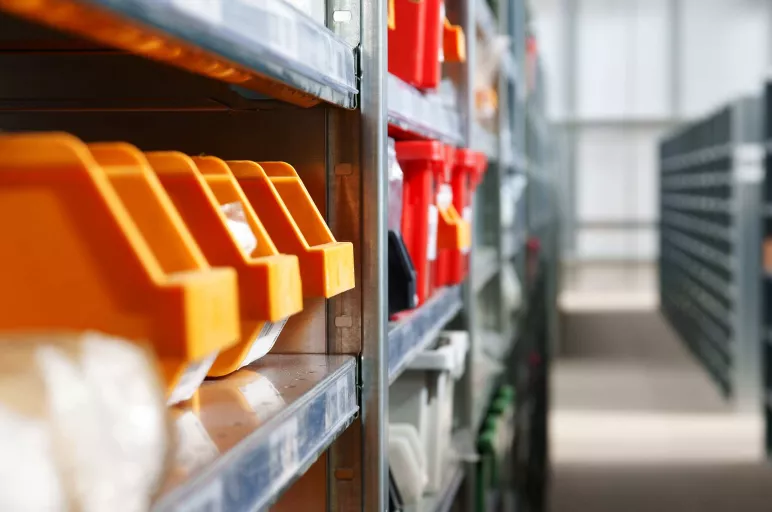
Industrial Vending Machines — A New Approach to MRO Inventory Management
April 04, 2018 | MRO
MRO spend accounts for a significant portion of an organization’s total spend (about 30 percent); however, almost half of the MRO inventory remains unused in many cases. Unnecessary stockpiles (especially of noncritical and easily available supplies) that occupy valuable warehouse space, ineffective ordering and improper identification of stocks, and poor oversight by maintenance managers are challenges MRO category managers often face. Moreover, organizations usually have manufacturing sites with a single central stores facility. Workers belonging to different production areas walk into the stores and wait to be served by the stores operatives. The staff then logs into the transactions, reorders the items from multiple suppliers, and creates multiple administration and invoicing trails before they dispatch the items. The whole process takes up a lot of time, which may eventually impact the subsequent stages of production. This is where purchasing an industrial vending machine makes business sense for organizations, as it allows them to optimize MRO purchases and streamline MRO inventory management.
Benefits of Using an Industrial Vending Machine
A vending machine is a solution that automatically dispenses the required MRO item at the production site 24*7 and performs automatic record keeping. The machine can be configured to be accessed by a specific employee or group of employees, for a specific quantity, within a specific time frame. This helps the organization eliminate any unnecessary use of inventory. It can also be configured to accommodate irregular-sized and -shaped supplies — from gloves to wrenches — eliminating the need to repackage or reform items while returning them. Vending machines also come with the option of auto replenishment. The machine has a critical level of inventory set for each item; whenever any item falls below the minimum level, the machine notifies the user about the same. The machine operator then logs into the software and places an order to restock the item. This eliminates the situation of stock-outs, ensuring smooth production. Furthermore, the data collected can be used to forecast inventory needs based on the actual demand. According to the figures provided by Fastenal, one of the prominent players in the vending solution space, procurement savings realized by adopting vending machines can be as high as 50 percent.
There are different types of vending machines available in the market. A buyer can opt for vending machines that store single items (such as aprons, gloves or tools), or machines that store different items, depending on their requirements. The latter can store items such as safety equipment, test instruments, fasteners, hand tools, and office supplies, to name a few; cutting tools, PPE and safety products are the rapidly growing areas of industrial dispensing.
Although vending solutions have been around for decades, it is only in the past five to six years that they have gained traction, thanks to advancements in technology. For example, in the earlier versions of vending machines, processing was carried out on-premises. Data sync and support costs used to be major concerns for organizations, as significant manpower and investments would be required to support data replication. However, with the introduction of a cloud-based system (considered as a major breakthrough), it has become a lot easier for organizations to afford, implement and use a vending solution.
What Sourcing Managers Must Know as They Explore Vending Solutions as an Option
Sourcing managers need to evaluate the suitability of these machines for their organizations. Typically, these machines will be suitable for industries that require a huge number of supplies and where production downtime results in significant costs for the company. Manufacturing, aerospace, oil & gas, and engineering services are industries where vending machines will prove to be highly useful.
Sourcing managers also need to look at their industrial supplies consumption data to identify if there are certain items that form a significant portion of company’s overall consumption and are ordered frequently. Once the sourcing managers are convinced of the suitability of a vending machine for their organization, they can they decide on the engagement model.
Organizations have two choices — to opt for a supplier-managed solution, or a supplier-agnostic one. In supplier-managed solutions, companies partner with their preferred vendor, typically a distributor that manages the machines and inventories for the client. In most cases, clients need to pay for the supplies as and when they use them. Meanwhile, for supplier-agnostic solutions, clients directly engage with vending machine manufacturers and manage the inventory on their own. The cost of a supplier-agnostic solution tends to be higher than that of a supplier-managed program; however, cost cannot be the only decision-making factor when it comes to purchasing a vending machine. It should be aligned with the organization’s strategies. For example, organizations that do not wish to engage with a single vendor will most likely prefer the supplier-agnostic solution, as it allows them to store products purchased from multiple vendors.
Procurement managers are recommended to explore the option of using industrial vending machine solutions, as they are an effective way for manufacturers to reduce costs, improve cash flow and prevent unnecessary downtime.



